
Small Methods
Scope & Guideline
Pioneering new paths in nanotechnology and polymer science.
Introduction
Aims and Scopes
- Nanomaterials Synthesis and Characterization:
Emphasis on the development and characterization of novel nanomaterials, focusing on their unique properties and potential applications across fields such as energy storage, catalysis, and biomedicine. - Energy Storage and Conversion Technologies:
Research on advanced materials and methods for energy storage systems (e.g., batteries, supercapacitors) and conversion technologies (e.g., fuel cells, photocatalysis), highlighting innovative design and engineering solutions. - Biomedical Applications of Nanomaterials:
Exploration of the use of nanomaterials in biomedical contexts, including drug delivery systems, imaging techniques, and therapeutic applications, with a focus on enhancing efficacy and safety. - Interface and Surface Engineering:
Studies that address the engineering of interfaces and surfaces of materials to improve performance in various applications, particularly in the context of electrochemistry and catalysis. - Machine Learning and Computational Methods:
Integration of machine learning and computational approaches to optimize material properties and predict performance in real-world applications.
Trending and Emerging
- Sustainable and Green Materials:
There is a growing trend towards the development and application of sustainable materials, particularly those derived from renewable resources or designed for minimal environmental impact, aligning with global sustainability goals. - Advanced Electrochemical Systems:
Research focusing on advanced electrochemical systems, including novel battery technologies, electrocatalysts for CO2 reduction, and innovative electrolytes, has gained significant attention, reflecting the urgent need for energy-efficient technologies. - Smart and Responsive Materials:
Emerging studies on smart materials that respond to environmental stimuli (e.g., temperature, pH, light) are trending, particularly in biomedical applications where controlled delivery and responsiveness are critical. - Hybrid Nanomaterials:
The integration of different types of nanomaterials to create hybrid systems that leverage the strengths of each component is becoming increasingly popular, particularly in energy storage and conversion applications. - AI and Machine Learning in Materials Science:
The application of artificial intelligence and machine learning techniques to optimize materials design, enhance characterization methods, and predict performance is trending, indicating a significant shift towards data-driven research.
Declining or Waning
- Traditional Large-Scale Synthesis Methods:
There has been a noticeable decline in publications focused on traditional large-scale synthesis methods, as the field increasingly emphasizes nanoscale approaches and the development of more efficient, scalable techniques. - Basic Theoretical Studies:
The journal has seen fewer contributions centered around purely theoretical studies without experimental validation, as there is a growing preference for research that combines theoretical insights with practical applications. - Conventional Energy Storage Systems:
There is a waning interest in conventional energy storage systems, such as lead-acid batteries, as the focus shifts towards more innovative and sustainable technologies like sodium-ion and zinc-ion batteries. - Passive Materials Research:
Research centered around passive materials that lack active functionalities or novel applications is becoming less frequent, with a stronger emphasis on multifunctional materials that exhibit enhanced properties.
Similar Journals
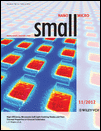
Small
Exploring the Future of Materials at the Nanoscale.Small is a premier academic journal published by WILEY-V C H Verlag GmbH, focusing on cutting-edge research across a multitude of disciplines including biomaterials, biotechnology, chemistry, engineering, materials science, medicine, and nanoscience. With an impressive impact factor and recognized in the top quartile (Q1) across these categories, Small serves as a vital platform for scientists and researchers aiming to disseminate innovative findings and explore the interplay between small-scale materials and their large-scale applications. Enjoying a broad readership, the journal has been key in advancing knowledge from its inception in 2005 and aims to foster collaborations and discussions that steer the future of material science and biotechnology. Though not open access, research published in Small remains invaluable for professionals and students eager to explore the advancements at the nanoscale, promoting a comprehensive understanding of modern scientific challenges and opportunities.

JOURNAL OF POROUS MATERIALS
Leading the Way in Porous Materials ResearchJOURNAL OF POROUS MATERIALS, published by SPRINGER, is an esteemed peer-reviewed journal in the field of materials science and engineering, with a particular focus on porous materials, their properties, and applications. Since its inception in 1995, this journal has become a pivotal platform for innovative research, offering a robust repository of knowledge with a timeline extending through to 2024. The journal is recognized for its influential contributions, as evidenced by its Q2 quartile ranking in both Materials Science and Mechanical Engineering categories, and its strong performance in Scopus rankings, placing it in the 71st percentile for Mechanical Engineering. Researchers and professionals in the field will find essential insights into the latest advancements and interdisciplinary approaches related to porous materials. While the journal operates under a subscription model, its reach and significance in advancing the understanding of porous materials make it a vital resource for academics and industry practitioners seeking to apply cutting-edge research to real-world challenges.

Accounts of Materials Research
Unveiling groundbreaking discoveries in materials science.Accounts of Materials Research is a premier journal published by the American Chemical Society, focusing on the multidimensional field of materials science. With a robust impact factor and a commitment to open-access research, it serves as a vital platform for leading-edge discoveries from 2020 to 2024. The journal has rapidly ascended to the top quartile in multiple categories, including Chemical Engineering, Materials Chemistry, and Polymers and Plastics, demonstrating its significant influence within the academic community. Recognized by Scopus as a key resource—with remarkable rankings that place it in the 95th percentile of its field—Accounts of Materials Research is devoted to publishing high-quality, innovative research that addresses critical challenges in materials development and implementation. This journal is essential for researchers, professionals, and students seeking to stay informed about the latest advancements and collaborative opportunities within the interdisciplinary landscape of materials science.

Nano Materials Science
Fostering Collaboration in the World of Nano Research.Nano Materials Science is a premier open-access journal dedicated to the dissemination of groundbreaking research in the fields of nanotechnology, materials science, and chemical engineering. Published by KEAI PUBLISHING LTD, this journal has quickly established itself as a leading platform in its area since its inception in 2019, with impressive rankings in the Scopus database, holding a Q1 position across multiple categories, including Chemical Engineering and Materials Science. Based in Beijing, China, Nano Materials Science provides researchers and practitioners access to a wealth of high-quality peer-reviewed articles, fostering innovation and collaboration within the scientific community. With its impact factor steadily rising and a commitment to open access, the journal aims to bridge the gap between theoretical research and practical applications, making it an essential resource for professionals and students eager to stay at the forefront of materials research and nanotechnology advancements.
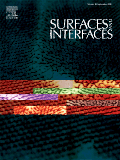
Surfaces and Interfaces
Bridging Science and Technology at the Surface LevelSurfaces and Interfaces is a leading international journal published by Elsevier, dedicated to advancing the understanding of surface and interfacial phenomena across various disciplines, including chemistry, materials science, and physics. With an impressive impact factor placing it in the Q1 quartile for its categories as of 2023—spanning Chemistry, Condensed Matter Physics, and Surfaces, Coatings, and Films—this journal not only serves as a critical platform for innovative research but also reflects the dynamic nature of surface science in contemporary applications. The journal is indexed in Scopus, ranking 25th out of 132 in the Materials Science – Surfaces, Coatings and Films category, marking it in the top 19% of this prestigious field. Although it is not an open-access platform, the journal remains a vital source of curated academic material for researchers, professionals, and students seeking to deepen their knowledge and contribute to ongoing conversations in surface and interface science. Published from the heart of Europe in Amsterdam, Surfaces and Interfaces invites submissions that challenge conventional paradigms and explore the forefront of technology and materials.

Small Science
Bridging Disciplines Through Open Access ResearchSmall Science is an esteemed open-access journal published by WILEY, dedicated to pioneering research in the realms of catalysis, materials science, and chemical engineering. Established in 2021, this journal has rapidly gained recognition, ranking in the top quartiles (Q1) in various categories, including a remarkable 17th position in Materials Science and 8th in Chemical Engineering on Scopus. With an impact factor reflective of its growing influence and a commitment to disseminating cutting-edge knowledge, Small Science serves as a crucial platform for researchers, professionals, and students seeking to explore the latest advancements and applications in these dynamic fields. The journal's open-access model ensures wide reach and accessibility, facilitating collaboration and innovation across disciplines. Its headquarters are located in the United States, at 111 River St, Hoboken, NJ, supporting a global readership keen on addressing contemporary scientific challenges and driving progress in technology and materials synthesis.

Journal of Inorganic and Organometallic Polymers and Materials
Driving Excellence in Polymer Science and Materials ChemistryThe Journal of Inorganic and Organometallic Polymers and Materials, published by SPRINGER, is a premier academic journal dedicated to advancing the field of materials science, particularly in the domains of inorganic and organometallic polymers. Established in 1996, this journal has successfully converged multiple years of research, reflecting the dynamic evolution of the field through to 2024. With an impressive Scopus Rank placing it in the top 81st percentile in both Materials Chemistry and Polymers and Plastics, it is recognized for its significant contributions and innovations. The journal is classified in the prestigious Q2 Category, indicating its influence and relevance among leading publications. While it operates under a subscription model, the journal is committed to disseminating cutting-edge research, providing insights that empower researchers, professionals, and students to push the boundaries of materials chemistry and polymer science. Its focus on high-quality, peer-reviewed articles ensures that readers are equipped with the latest findings and methodologies that drive this exciting and rapidly evolving field.
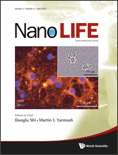
Nano LIFE
Pioneering advancements in bioengineering and nanomedicine.Nano LIFE, published by World Scientific Publishing Company, is a multidisciplinary journal that delves into the dynamic fields of bioengineering, biomedical engineering, and pharmaceutical science, providing a platform for researchers to disseminate their cutting-edge findings. With an ISSN of 1793-9844 and e-ISSN 1793-9852, this journal emphasizes the significance of nanoscale research in healthcare and technology, positioning itself as a vital resource for professionals and academics alike. Although currently categorized in the Q4 quartile for multiple scientific disciplines in 2023, its unique focus on the intersection of nanotechnology and life sciences aims to elevate the discourse in these rapidly evolving sectors. Researchers can anticipate publishing innovative methodologies and results, contributing to the overall understanding and application of nanotechnology in medicine. Located in Singapore, Nano LIFE not only serves the global research community but also reflects the growing interest in nanotechnology across diverse fields.
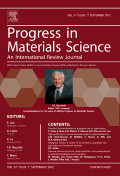
PROGRESS IN MATERIALS SCIENCE
Driving Progress in Material TechnologiesPROGRESS IN MATERIALS SCIENCE is an esteemed peer-reviewed journal published by Pergamon-Elsevier Science Ltd, focusing on pioneering advancements and comprehensive studies in the field of Materials Science. With an ISSN of 0079-6425 and an E-ISSN of 1873-2208, this journal boasts a prestigious status, ranking in the Q1 category for Materials Science (miscellaneous) and achieving a remarkable 99th percentile in Scopus rankings, positioned 4th out of 463 journals in General Materials Science. Published from the United Kingdom, PROGRESS IN MATERIALS SCIENCE provides critical insights into the latest discoveries, trends, and methodologies shaping the materials science landscape, making it an invaluable resource for researchers, professionals, and students alike. Readers can explore rich content on subjects ranging from nanomaterials to biomaterials and beyond, all designed to foster innovation and knowledge dissemination in the materials science community. Although it is not an open-access journal, it remains a pivotal platform for high-quality research and essential discourse in this dynamic field.
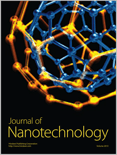
Journal of Nanotechnology
Catalyzing Progress in the Field of NanotechnologyThe Journal of Nanotechnology, published by Hindawi Ltd., is a premier open-access platform dedicated to delivering high-quality research in the dynamic field of nanotechnology. With the ISSN 1687-9503 and E-ISSN 1687-9511, this journal has been at the forefront of disseminating innovative findings since its transition to open access in 2009, fostering a global dialogue among researchers, professionals, and students. Based in Egypt, the journal maintains its commitment to advancing the material science sector, currently holding a prestigious Q2 ranking in the 2023 Materials Science (miscellaneous) category, reflecting its significant contribution to the field. With a Scopus ranking of #162 out of 463 journals in General Materials Science, placing it in the 65th percentile, the Journal of Nanotechnology serves as a crucial resource for those looking to explore the latest advancements and applications in nanomaterials. The journal invites submissions that align with its scope, which emphasizes interdisciplinary approaches and novel methodologies, promising to enhance both academic and practical aspects of nanotechnology.